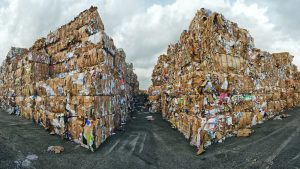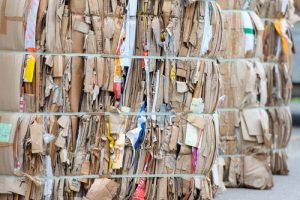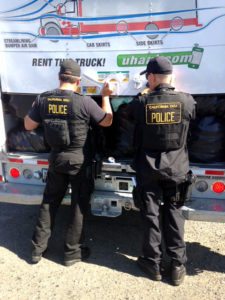 Brand owners will have to cut bigger checks over the next year to support curbside recycling in Canada’s most populous province.
Brand owners will have to cut bigger checks over the next year to support curbside recycling in Canada’s most populous province.

Resource Recycling keeps you on top of critical industry trends and brings unparalleled analysis of the evolving materials stream, market turbulence, policy trends and more.
Sign up for our free weekly e-newsletters to receive the latest news directly.
 Brand owners will have to cut bigger checks over the next year to support curbside recycling in Canada’s most populous province.
Brand owners will have to cut bigger checks over the next year to support curbside recycling in Canada’s most populous province.
 After nearly three years of discussion and testing around paper recycling, the EU Reffibre initiative has wrapped up with a final conference in Germany.
After nearly three years of discussion and testing around paper recycling, the EU Reffibre initiative has wrapped up with a final conference in Germany.
 Scrap plastics recently enjoyed a month-to-month rise in shipments abroad. Paper and metals, however, were marked by declines.
Scrap plastics recently enjoyed a month-to-month rise in shipments abroad. Paper and metals, however, were marked by declines.
The Canadian city of Edmonton has been forced to eat its paper-recycling investment – millions of dollars – after the company it partnered with went bankrupt and no other firms stepped up to take over the plant.
 The product stewardship group at the center of British Columbia’s recently reshaped curbside program has taken on a new moniker.
The product stewardship group at the center of British Columbia’s recently reshaped curbside program has taken on a new moniker.
 Climbing recycled paper prices contributed to the recent idling or closure of two newsprint mills, one in North America and one in Asia.
Climbing recycled paper prices contributed to the recent idling or closure of two newsprint mills, one in North America and one in Asia.
 This Saturday, April 22 marks Earth Day, an event that was first celebrated in the U.S. 47 years ago. Industry entities are marking the occasion with efforts that range from impactful to flat-out quirky.
This Saturday, April 22 marks Earth Day, an event that was first celebrated in the U.S. 47 years ago. Industry entities are marking the occasion with efforts that range from impactful to flat-out quirky.
 For the second year in a row, U.S. paper recovery marked a record high in 2016. Use of recycled paper is also marking a new milestone in Canada.
For the second year in a row, U.S. paper recovery marked a record high in 2016. Use of recycled paper is also marking a new milestone in Canada.
 The ringleaders of a major container deposit fraud scheme will spend time behind bars and pay more than $1 million in to the state of California.
The ringleaders of a major container deposit fraud scheme will spend time behind bars and pay more than $1 million in to the state of California.
